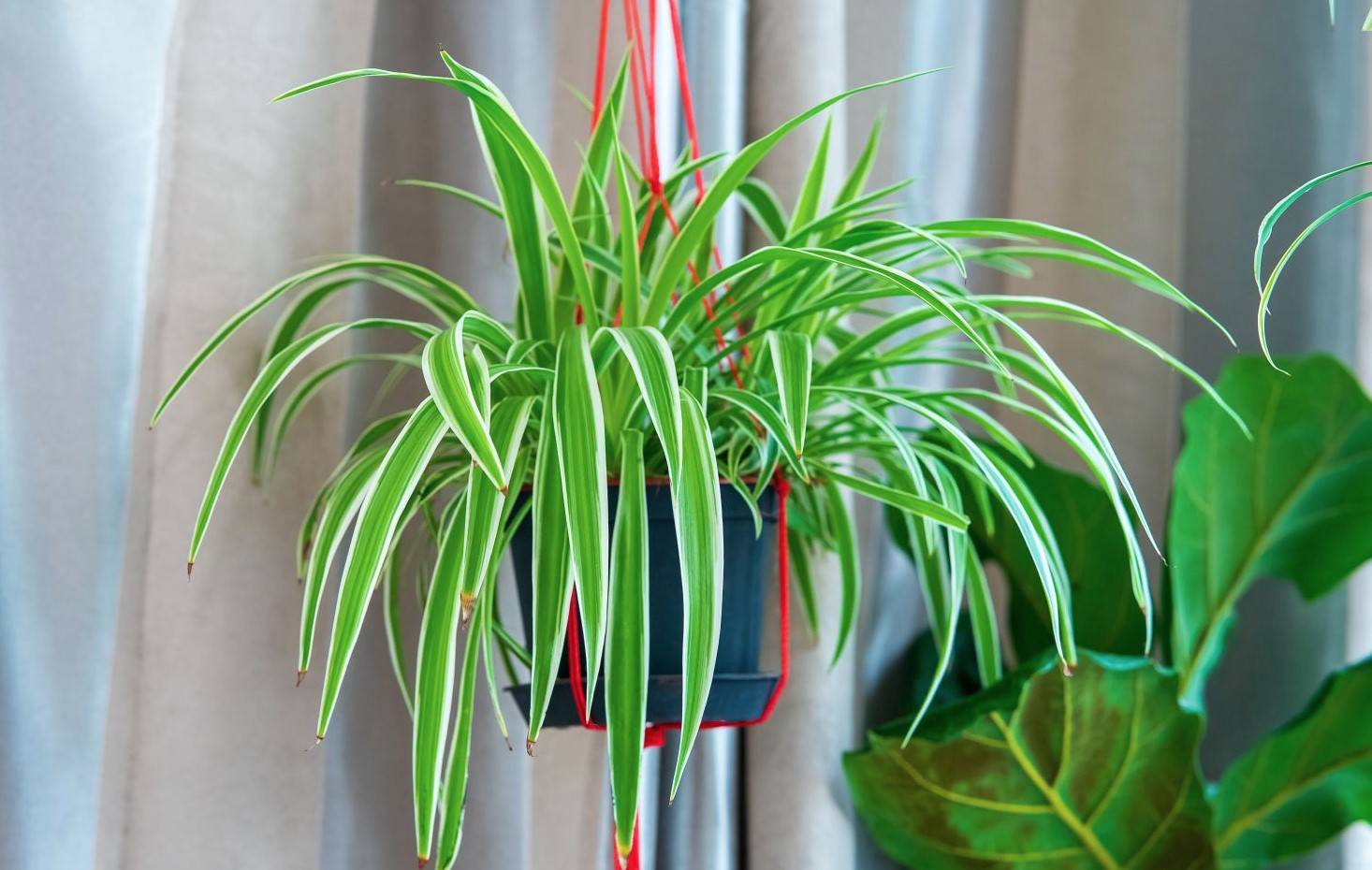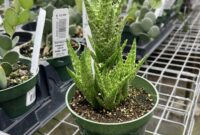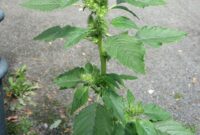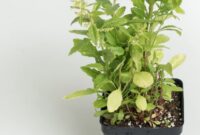
What is a Spider Plant?
Spider plants, scientifically known as Chlorophytum comosum, are popular houseplants renowned for their air-purifying qualities and attractive, cascading foliage. Their long, slender leaves with distinctive white stripes make them a visually appealing addition to any indoor space.
How to Grow Spider Plants Indoors
Growing spider plants indoors is relatively easy, even for beginner gardeners. Here’s a step-by-step guide:
- Choose the Right Pot: Select a pot with drainage holes to prevent waterlogging. The pot size should be slightly larger than the root ball.
- Prepare the Soil: Use a well-draining potting mix that is rich in organic matter. You can also mix equal parts of potting soil, perlite, and peat moss.
- Plant the Spider Plant: Gently remove the plant from its original pot and place it in the new pot. Fill the pot with the prepared soil, ensuring the plant is planted at the same depth as it was in the original pot.
- Water the Plant: Water the plant thoroughly, allowing excess water to drain from the pot.
Spider Plant Benefits for Air Quality
Spider plants are excellent air purifiers, capable of removing harmful toxins like formaldehyde, benzene, and xylene from the air. They are particularly effective at improving indoor air quality in homes and offices.
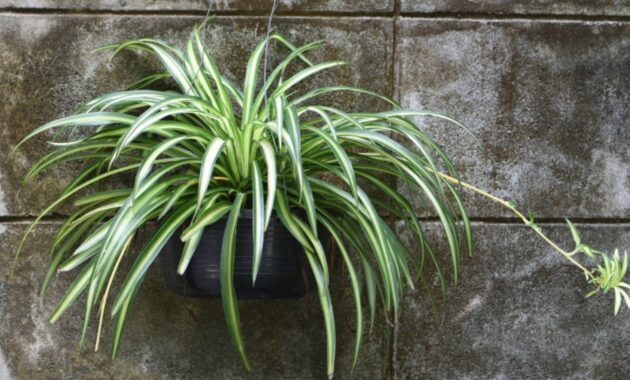
Propagating Spider Plants
Spider plants are incredibly easy to propagate. Simply cut off a plantlet, which is a small, baby spider plant, and place it in a pot of soil or water. The plantlet will quickly root and grow into a new plant.
Spider Plant Light Requirements
Spider plants thrive in bright, indirect light. They can tolerate low light conditions, but their growth may slow down. Avoid placing them in direct sunlight, as it can scorch their leaves.
Spider Plant Watering Schedule
Water your spider plant regularly, but avoid overwatering. Allow the top inch of soil to dry out between waterings. During the winter months, reduce the frequency of watering.
Best Soil for Spider Plants
A well-draining potting mix is ideal for spider plants. You can purchase a pre-mixed potting mix or create your own by combining potting soil, perlite, and peat moss.
Spider Plant Varieties and Types
There are several varieties of spider plants, each with its unique characteristics:
- Chlorophytum comosum ‘Vittatum’: This is the most common variety, with green leaves striped with white.
- Chlorophytum comosum ‘Bonnie’: This variety has curly leaves and is a popular choice for hanging baskets.
- Chlorophytum comosum ‘Ocean’: This variety has green leaves with white edges.
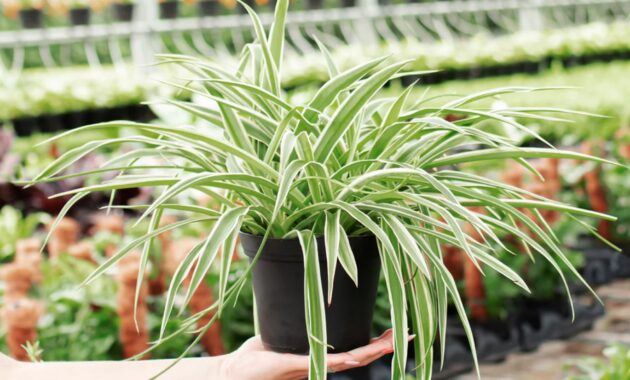
Are Spider Plants Pet-Friendly?
Yes, spider plants are generally safe for pets. However, it’s always best to consult with a veterinarian if you have any concerns.
Spider Plant Hanging Baskets
Spider plants are perfect for hanging baskets due to their cascading growth habit. They add a touch of greenery to any room and can help to purify the air.
Spider Plant Fertilizer Needs
Fertilize your spider plant once a month during the growing season (spring and summer) with a balanced liquid fertilizer diluted to half strength.
How to Revive a Spider Plant
If your spider plant is looking droopy or unhealthy, there are a few things you can do to revive it:
- Check the Watering: Ensure the plant is not overwatered or underwatered.
- Adjust the Light: Move the plant to a brighter location, but avoid direct sunlight.
- Fertilize: Feed the plant with a balanced liquid fertilizer.
- Repot: If the plant is root-bound, repot it into a larger pot.
Spider Plant Humidity Needs
Spider plants prefer moderate humidity levels. If the air is dry, mist the plant occasionally or place a humidifier nearby.
Spider Plant Brown Tips Fix
Brown tips on spider plant leaves are often caused by low humidity, overwatering, or underwatering. To fix this issue, adjust the watering schedule, increase humidity, and ensure the plant is receiving adequate light.
Spider Plant Growth Rate
Spider plants are relatively fast-growing, especially during the spring and summer months. They can produce numerous plantlets, which can be propagated to create new plants.
How to Repot a Spider Plant
Repot your spider plant every 1-2 years or when it becomes root-bound. Choose a pot that is slightly larger than the current pot. Gently remove the plant from its current pot and place it in the new pot, filling in with fresh potting mix.
Spider Plant Pest Issues
Spider plants are susceptible to mealybugs and spider mites. To control these pests, use insecticidal soap or neem oil.
Common Spider Plant Problems
- Yellowing Leaves: This can be caused by overwatering, underwatering, or nutrient deficiency.
- Brown Tips: This can be caused by low humidity, overwatering, or underwatering.
- Leggy Growth: This can occur if the plant is not receiving enough light.
Spider Plant Pruning Guide
Pruning your spider plant can help to maintain its shape and encourage bushier growth. Simply trim off any dead or damaged leaves.
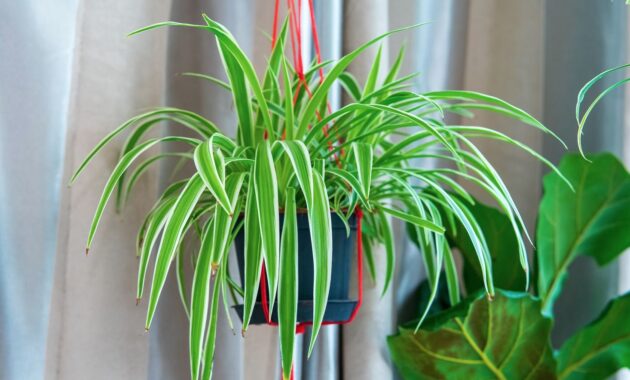
Spider Plant Origin and History
Spider plants are native to South Africa. They were introduced to Europe in the 17th century and have been popular houseplants ever since.
Conclusion
Spider plants are easy-to-care-for houseplants that offer numerous benefits, including air purification and aesthetic appeal. By following these care tips, you can enjoy the beauty and health benefits of spider plants for years to come.
FAQs
- Can I grow spider plants in water?
Yes, spider plants can be grown in water. Simply place the plantlet in a jar of water and change the water every few days. - How often should I mist my spider plant?
Misting your spider plant 1-2 times per week can help to increase humidity, especially during the winter months. - Why is my spider plant not producing plantlets?
Lack of light, insufficient nutrients, or stress can prevent spider plants from producing plantlets. Ensure the plant is receiving adequate light and fertilizer. - Can I use tap water to water my spider plant?
It’s best to use filtered or distilled water to water your spider plant, as tap water can contain minerals that can build up in the soil and harm the plant. - What is the best temperature for spider plants?
Spider plants thrive in temperatures between 65-80°F (18-27°C). Avoid exposing them to cold drafts or extreme heat.
